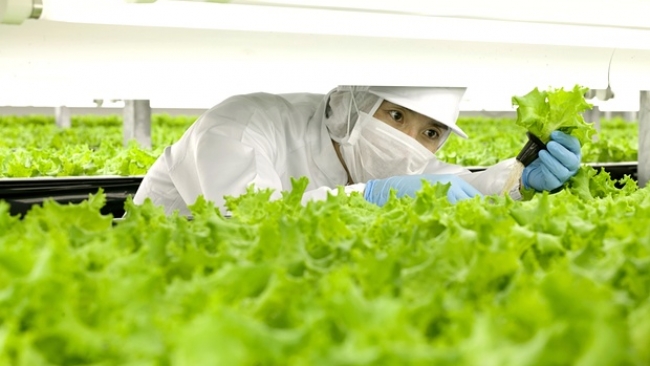Urban farming in a freight container

Boston agritech startup FreightFarms buys old shipping containers and turns them into hydroponic farms. It's a nifty way to grow fresh greens right in the city. But does it make sense environmentally - and financially? There are no seasons in an insulated freight container - so every FreightFarm is able to produce several hundred heads of lettuce or other leafy greens each week, year-round, no matter the location. FreightFarms, the Boston-based brainchild of entrepreneurs Jon Friedman and Brad McNamara, started in 2010 by buying used refrigeration containers - also known as reefers - and turning them into ready-to-go hydroponic indoor farms. "We tear all the refrigeration gear out of the reefers, but leave the insulation," said Caroline Katsiroubas, who joined the company as its first employee two and a half years ago. "Then we refurbish them and install the hydroponics equipment, climate controls and other parts of the system." By the time FreightFarm is done setting up a complete hydroponic system in a refurbished reefer, it's priced at $82,000. That price includes a mandatory two-day training program in Boston, where newbies are shown how to manage the farm. So far, Katsiroubis told DW, the company has sold 54 FreightFarms to urban-farmer clients like former teacher Connie Cooney and her husband Shawn, a baby-boomer couple in East Boston, who started Corner Stalk Farm in the city a couple of years ago and now operate five FreightFarms containers. While the setup is great for locally growing fresh vegetables, less clear is whether the high energy use ultimately makes this an eco-friendly option. If renewable energy could be brought into the mix, modular hydroponic systems like FreightFarms could become ubiquitous - if they could become affordable enough.
Environmental advantages
FreightFarms doesn't skimp on the tech - the package includes a smartphone app allowing them to monitor the temperature, humidity, CO2 and nutrient flow levels remotely, and to view the inside of the container by connecting to a built-in monitoring camera. There's also the option of having seeds, nutrients, and growing medium delivered to their door, and even built-in speakers in the containers to enable music to smooth the day's work-flow. Each container entails about 15 to 20 hours of labor per week, according to Katsiroubas. No doubt, FreightFarms containers work well in terms of producing green veggies. The system is set up so that not very much can go wrong: Given water and power hookups, if FreightFarmers get on with their work, they'll get their fresh greens. On the positive side environmentally, FreightFarms use up-cycled refrigerated freight containers, or reefers, that have been dropped from the cargo fleet. Used 40-foot reefers in decent shape can be had for around $5,000 - about a quarter of the price of new ones. Moreover, if greens are produced locally year-round, most of the transport and refrigeration costs normally associated with providing fresh greens in groceries fall away. So there'd be no need to burn fossil fuels to move greens in refrigerated trucks from southern California or Mexico to the rest of the country during an American winter, for example.Source: DW
Updated: Tue 23 Feb 2016 at 08:05





